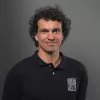I think I heard somewhere that it was tested, or they were discussing the possible scenarios.
During Ikarus, the results looked good, but someone pointed out a scenario involving strong lift before an SSS: when pilots start getting sucked up, they may spiral or otherwise lose altitude. If this happens to several dozen pilots at once, it could easily turn into a serious mess.
A similar situation occurred on a more spread-out task in Roldanillo about two years ago. A cloud started pulling very aggressively, and pilots were on the edge of entering restricted airspace. Things got tense with around 20–30 pilots involved. Some entered spirals, while others began stalling. At the finish, tensions ran high - those flying slightly lower behind were frustrated with pilots in front who were dropping unexpectedly on them, especially the ones stalling pilots.
In my view, sooner or later a scenario like this is bound to happen again, and the risk of collisions will increase. But, of course, I could be wrong.









Comments
CIVL Delegate
I totally support it. I was there on Ikarus, it was a great decision on the last day!
But I really believe it should be as simple as SSS crossing penalty. It doesn't matter what pilots do before, obviously they should try not to get in the cloud, but at least they'd know that they cannot cross SSS like that.
And SSS crossing should be like an airspace penalty, or similar.